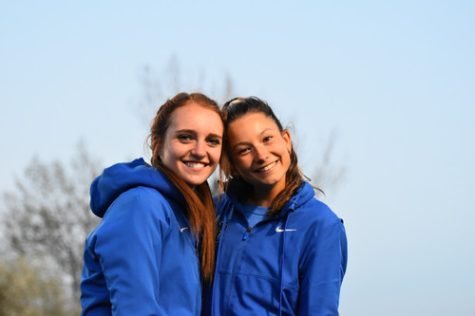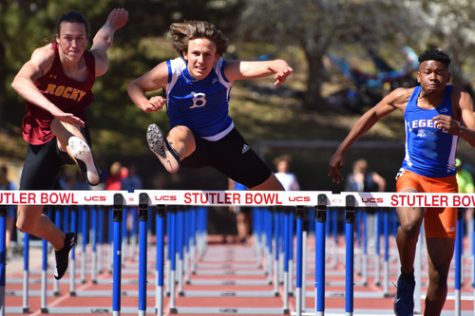The Beginning of Track Season
Broomfield’s official track season is starting up (February 27). Nearly 140 participants come out every year to put their skills to the test.

March 3, 2023
Broomfield’s official track season is starting up (February 27). Nearly 140 participants come out every year to put their skills to the test.
Led by a team of encouraging coaches, participants’ weeks will be filled with daily practices, meets, and competitions for the next three months.
The Stigma
From an outside perspective it is easy to jump to conclusions about one’s qualifications to run track. The thought of running willingly as a sport instead of a punishment can be enough to draw some away.
Despite this, the diversity of track is often overlooked. In track and field, athletes have so many different options, from running 100 meters to 1600 meters to hurdling to jumping to throwing; it has a number of inclusive opportunities.
With this in mind, a common misconception is there are naturally good or bad runners. While some may have more physical advantages than others, running is ultimately an acquired ability like anything else.
Justin Hazzard, a history teacher and head girls Track & Field Coach said, “People don’t realize that running is a skill. If people looked at sprinting like they looked shooting a basketball or setting a serve or delivering a pitch, it’s all a matter of how people frame it.”
Mindset also plays a considerable role in the sport, as it does anything else. The sport comes down to competing against one’s self instead of other athletes. Each race is about trying to set a new PR (personal record), but it is easy to get caught up in comparison with others.
Above all else, it is important to celebrate all wins, big or small. High school track is a great place to enjoy the experience and try new things.
“The best advice I can give anyone in attempting anything is to learn as much as possible, to experiment in a safe environment, to enjoy yourself… so stick with it. Just because something’s hard doesn’t mean it’s not valuable,” Hazzard said.
Runner’s Perspective
Those who continue to come back year after year have grown and learned things in their time that have changed their perspective on the sport. Most share the initial nerves of starting something new.

Mattea Drake (‘25), a 100m sprinter, said, “I was skeptical about it at first because I just didn’t know what to expect, but when I went for it I met so many of my great friends and now it’s so fun, I love it.”
Drake discovered a new passion and skill she never knew she had. Anything new in life is scary, even if it is as simple as trying a new highschool sport, but like Drake, so many have found their spot on the track team.
Diego Estabanes (‘24), a member of the hurdling group, said, “Of course, it may not be for everybody, but it’s a unique experience that you can only live through once in high school — no shame in at least trying it”

Both Drake and Estebanes agree, the track program has a place for everyone and the memories formed
in track are like nothing else. “Track, especially hurdles, feels more like a family. This aspect makes it feel very unique and special to me,” said Estabanes.
Bottom Line
Track and Field is more than running. The lessons learned in the stadium are those that can be applied to life. Track is incredibly welcoming, and anyone has the opportunity to learn those lessons if they apply themselves and try hard.
“What’s really great about track is it’s non discriminatory. I always say, stopwatches and tape measures don’t lie. It doesn’t care where you’re from, it doesn’t care how much money you make, it doesn’t care what your preferences are in life. It’s the ultimate equalizer,” said Hazzard.










